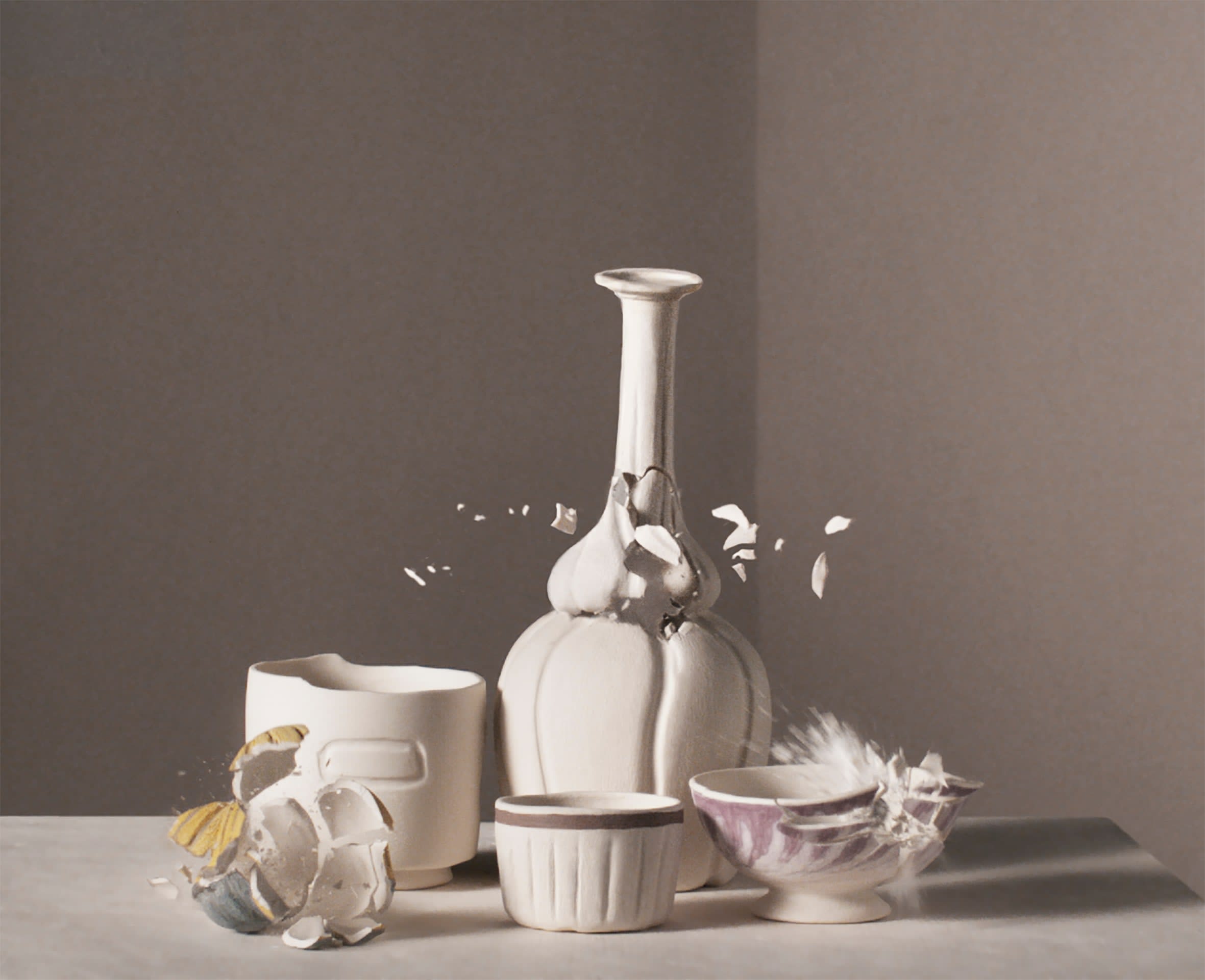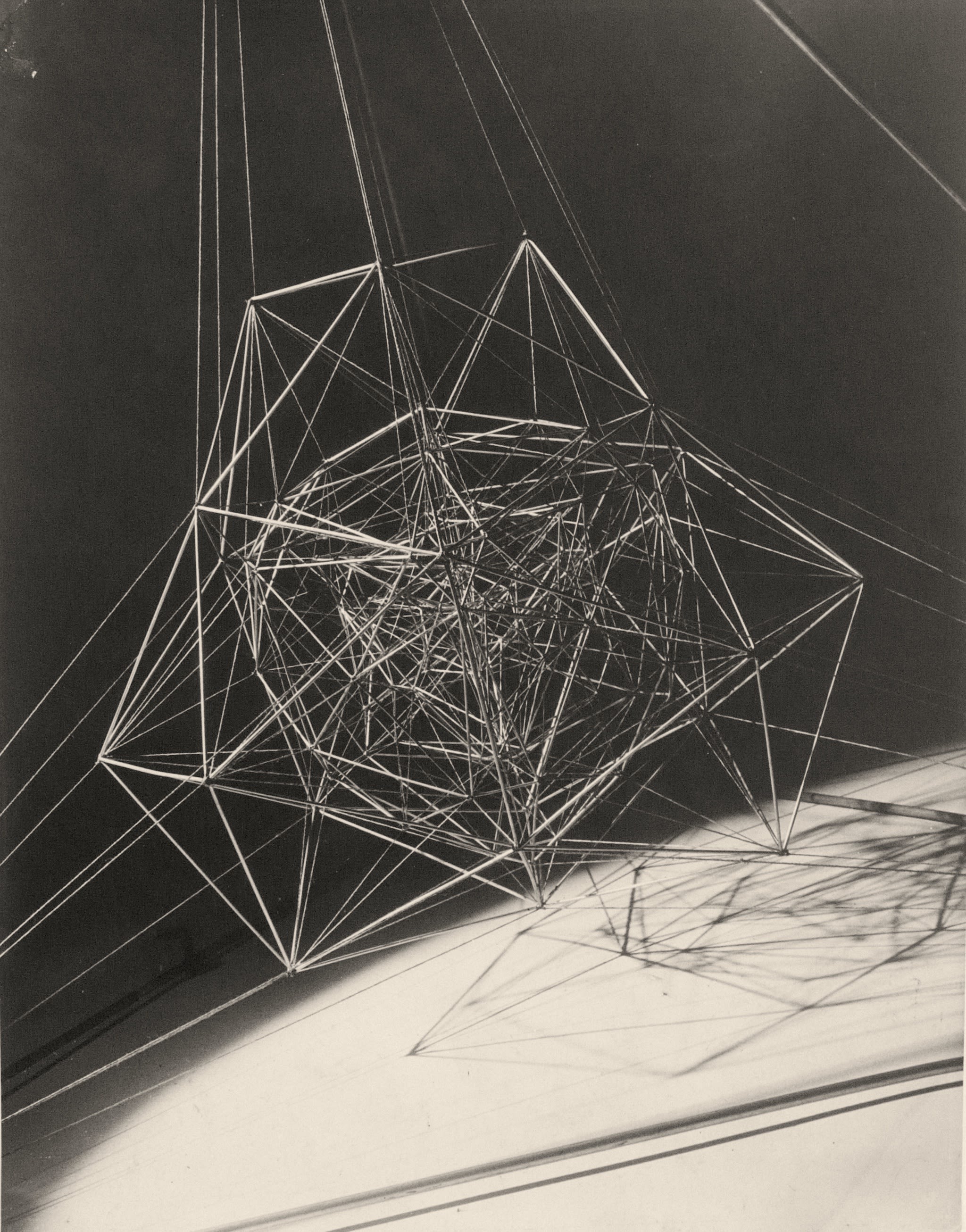-

Ori Gersht, Evertime 16, 2018
Archival pigment print, signed verso. Paper size: 34.6 x 42.8 cm. Edition of 6 + 2 APsThroughout Gersht’s career, his work has been concerned with the relationships between history, memory and landscape. He often adopts a poetic, metaphorical approach to explore the difficulties of visually representing conflict and violent events or histories.
Gersht approaches this challenge not simply through his choice of imagery, but by using modern technology and artificial intelligence to push the technical limitations of photography, questioning its claim to truth. Frequently referencing art history, Gersht’s imagery is uncannily beautiful; the viewer is visually seduced before being confronted with darker and more complex themes, presenting a compulsive tension between beauty and violence. This has included an exploration of his own family’s experiences during the Holocaust, a series of post-conflict landscapes in Bosnia and a celebrated trilogy of slow-motion films in which traditional still lives explode on screen.
For the series Evertime, Gersht commissioned masterfully crafted replicas of the vessels and bottles found in Giorgio Morandi’s paintings. After carefully arranging and lighting them, he shot the delicate ceramics with an air rifle while simultaneously recording the destruction and fragmentation of the objects with a high-resolution camera. Sequences of images and panoramas relay a cinematic unfolding of destruction and collapse, not otherwise visible in our usual experience of events.
By selecting a single image from each event, which contains, within itself, an infinite number of possibilities, Gersht is attempting to mimic the nature of historical memory, where single moments are isolated and awarded with iconic status, whilst the rest go unnoticed and are consequently forgotten in the ocean of the passing time.
-
Video ˙© The Solomon R. Guggenheim Foundation
-
MY WORKING PRACTICE IS GENERALLY TO MAKE A PHOTOGRAPH VERY QUICKLY AT THE BEGINNING OF EACH DAY, USING THIS FIRST IMAGE AS A SPRINGBOARD FOR EITHER RADICAL CHANGE OR SMALL REFINEMENTS. OBVIOUSLY, AS IN ALL CREATIVE PROCESSES, THERE IS THE UNEXPECTED.
— Richard Learoyd
-

Richard Learoyd, Poppies 2022
Unique Ilfochrome print. Framed with Optium acrylic. Paper size: 83.5 x 101.2 cmRichard Learoyd is known for his large-scale, exquisitely detailed photographic portraits and still-life works using a specially built room-size Camera Obscura. The subject; often a person, sometimes a still life, is in a connected room separated by a lens and lit by an intense lighting system. Light is then projected instantaneously using flash and reflected through the lens, exposing an image onto direct positive paper.
Learoyd creates photographs using the most basic form of photography to render a unique image which is made without any interposing negative, transparency or digital file. His process marries old and new technology: state of the art optics and Ilfochrome direct positive photographic paper to create a unique photographic experience.
Learoyd was born in Nelson, Lancashire, England in 1966. In 1990, he graduated from the Glasgow School of Art with a degree in fine art photography. He has shown his work at institutions such as the International Center of Photography in New York, the San Francisco Museum of Modern Art, the National Gallery in London Amongst many others. Learoyd has also been the subject of solo exhibitions at the Getty in Los Angeles, the Victoria and Albert Museum and the Mapfre Foundation in Madrid.
-
Video © San Francisco Museum of Modern Art
-

Man Ray, “Polyèdres”, Wire Sculpture with Shadow, 1935
Titled in pencil verso. ‘Man Ray’ wet stamp verso. ‘Cahiers D’Art’ wet stamp verso. Vintage silver gelatin print. Paper size: 29.5 x 23 cm"One day I was told about some mathematical objects at the Poincaré Institute. These were built by the tutors to explain algebraic equations. I went to see them, although I am not particularly interested in mathematics. I didn't understand a thing, but the shapes were so unusual, as revolutionary as anything that is being done today in painting or in sculpture. I spent several days photographing and sketching them with the intention of doing a series of painting influenced and inspired by these objects."
- MAN RAY
-
Made of plaster, wood, and wire, these educational objects realised in three dimensions a whole set of figures, equations and theorems related to non-Euclidean geometry. They are both the sign of an epistemological revolution and of a passage from the abstract to the concrete. During the time of the Surrealists, they came to exemplify André Breton’s notion of the "Crise de l'Objet", as laid out in an article published in the Cahiers d'art in 1936 where he commented that "an object is always recreating itself beyond where we lose sight of it."
Man Ray manipulated the sense of scale by photographing these objects close-up against a plain background. By playing on the light and perspective, he revealed the beauty of this perfect geometric form.
The photograph that we will be exhibiting at Masterpiece London is the very print that Man Ray gave to Cahiers d’art in 1936. A variant exists in the permanent collection of the Centre Pompidou in Paris. -
-

Bradford Washburn, After the Storm, Climber on the Doldenhorn, Switzerland, 1960
Signed in pencil verso. Silver gelatin print. Paper size: 50 x 60 cmThis extraordinary photograph was taken on the East Ridge of the Doldenhorn in the Bernese Oberland of the Swiss Alps (about 12 miles SW of the Jungfrau). Bradford Washburn made this photograph on July 24th 1960 at 10.40am, out of a Super Club 150 airplane on ski wheels, flying out of the little airport at Belp, near Berne, Switzerland. He used a Fairchild K-6 aerial camera, just after several days of heavy fresh snowfall through which the climbers were wallowing. If you look carefully you will see the footsteps of two other parties which climbed this ridge before the storm, still clearly visible behind this group of climbers.
Bradford Washburn (born June 7, 1910 in Cambridge USA), was an American, internationally renowned photographer, cartographer, and expert on Alaska's mountains and glaciers. He was Director of Boston's Museum of Science for over 40 years and served as Honoury Director until his death in January 2007. A pioneer of arial photography, his images of mountains are majestic, serene and sublime and his photographic work spans over six decades. -
IF YOU WOULD LIKE TO MAKE AN APPOINTMENT TO VISIT US ,PLEASE CONTACT THE GALLERY AT
GALLERY@MICHAELHOPPENGALLERY.COM
+44 (0) 207 352 3649



